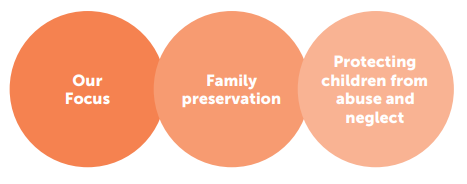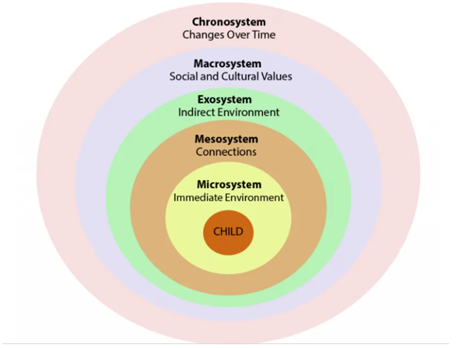Community Development Assignment: Self-reflection on Family & Cultural
Question
Task: For this community development assignment, you are required to discuss capacity building approaches for Aboriginal and Torres Strait Islander communities in the areas of:
- Health
- Education
- Employment
And how these approached are applied within a Community Development Framework with at least 1 example of a program in an Aboriginal and Torres Strait Islander community/area.
Answer
Introduction
The key purpose of this community development assignment is to reflect on my family and cultural background, wherein I have focused more on my living experience. In order to reflect on my experience, I have applied my understanding of theories such asBowlby-Ainsworth Attachment Theory and Bronfenbrenner’s Ecological Theory to the social environment throughout my childhood.
Reflection on my family and cultural background
Since I was born and brought up in an Aboriginal family, wherein I have had my grandparents and parents look after me. As with Aboriginal family structures, it is still cohesive forces that connect Aboriginal people mutually in all parts of Australia. Conventionally, I am raised in a family wherein I can find a collaboration of clans made up of grandparents, mothers, fathers, brothers, sisters, cousins and so on. However, in a current family context, it is said to be an extended family, but for our people or culture, it helps us to deliver emotional and psychological support that is significant for living and stay positive in life. Hence, my childhood was not as easy as compared to other children, but my parents did their best to get whatever I deserve for growing and development (Shepherd et al., 2017). Several obligations are there for Aboriginal families wherein I was able to experience differences created by people, due the difference in our cultural background. To eradicate this difference the society, the government has focused on capacity building of my community so that there can be development. Approaches like partnership approach, top-down approach and bottom-up approach has been introduced to enhance health, education and employment. Example of such initiative is right to self-determination that provides right to my community for freedom Studies state that in Australia, Aboriginal children account for only 3%, but they account for 40% in out-of-home care(Barnardos, 2021). Aboriginal children are nine times more probable to be on protection and care orders and are eleven times more probable to be living in out-of-home care as compared to other children. However, though I have not faced any issues like other indigenous children had been facing, such as child abuse and neglect, family violence, lack of childhood morality, low rate of school attendance, high rate of mental illness as well as homelessness. Nevertheless, I have faced several challenges and issues discrimination and lower opportunities in education and health. Moreover, our community generally focuses on family preservation and protecting children from abuse and neglect.

Fig 1- Community focus
Sources-(Un.org, 2021)
Conversely, as per my understanding, our family focuses on keeping us connected to our community and value our culture as well. Since my childhood, I have been taught that an optimistic identity for culture provides a person with a sense of, belonging, purpose andpsychological support and worth of oneself. This procedure might take place by an attachment to a cultural group wherein conviction systems, responsibilities, practices and values are strengthen and shared by members in a group(Un.org, 2021). Our culture believes in the possible health benefits of maintaining a robust identity for culture and contribution to cultural activities. Hence, our community believes in the unique view of the world wherein we see the world in a different way from the majority. Our culture considers the five key interrelated elements, and they are family, land, language, law and ceremony. For illustration, families are interrelated to the land by the system of kinship wherein this correlation towards the land comes with particular responsibilities and roles that are protected in the law and practised by rituals. This is how the five elements are connected in order to make a way of pursuing and being in a world that is differently Indigenous. However, as per my understanding, it is important to intricately interrelate with the said elements that helpour people and us to the damage done when colonisation takes place. Hence, we believe that when people are detached from culture, this has an intense influence on the sense of belonging and identity as it delivers that purpose and meaning to the lives of the people. Therefore, knowing this can help us to figure out a number of ways to reflect on the pain that has been caused by colonisation(Dockery, 2019). Furthermore, there is huge diversity amongst cultures of indigenous and non-indigenous such as family, land, law, language and ceremony, in fact, play a vital role in forming all our lives, not considering of our heritage or culture. Recognising what this seems like in our own life could help us expand understanding with others. For illustration, consider how my life is formed by the language I speak, my own traditions that my family and I follow, the area where I live and how I approach considerable life occasions such as funerals and weddings. In addition to this, I believe that as I grew up in understanding and empathy, I started to communicate and interact effectively with everyone in and outside of our community.
Application of Theories
Bowlby-Ainsworth Theory
This theory was developed with the concept of human attachment as a behavioural perspective and how this attachment affects an individual's behaviour and shapes the future. Using this theory, I will be reflecting on the impact of my bonds and relationship in my early childhood days. This theory applies to reflecting on my childhood because I was very much attached to my parents(Jones, 2015). Since I was raised in an Aboriginal family, my parents played a central role in modelling and structuring my social and interpersonal skills. In my early childhood, my mother and father both equally contributed to my emotional and physical well-being. Along with that, my family also contributed toward my well-being because I did not have a nuclear family, but rather I had an extended family. This resulted in the sharing of the role of caregiving among all the family members, and each member was responsible for my caring and nurturing.
I have created a close bond with my parents as they believed that children are gifts from God, and they took care of me spiritually as well. This spiritual upbringing by my parents inculcated lifelong values in me. My parents were my primary caregivers, and I created a deep and close bond with them. This developed my senses of love, empathy and compassion that allowed me to understand the feeling of other people. I was able to learn about religion at an early age due to my spiritual upbringing, and this shaped my emotions to be highly delicate and refined. The values and lessons that I learned from my parents developed my thoughts in such a manner that I have a positive attitude towards my life. I believe that everything will work out to be fine in the end, and life is about learning lessons and improving each day. At the same time, I was even attached to the other members of my family as they were my secondary caregivers. They also have contributed towards shaping my characteristic, and it has allowed me to develop as a mature individual.
Bronfenbrenner’s Ecological Theory
My experience can also be discussed using Bronfenbrenner’s Ecological Theory, for which five systems have been given, and they are microsystem, mesosystem, exosystem, macrosystem, and chronosystem(Guy-Evans, 2020).

Fig 2- The Framework of Bronfenbrenner's Ecological Systems Theory
Sources- (Guy-Evans, 2020)
Microsystem- In this system, my behaviour and development have been done due to my family, school, peers, and my religious organisation. They have helped me to develop a sense of compassion and empathy for others. Mesosystem- In this system, my interaction skills have been developed as I had to interact with several people at my home, school and church, and this system developed my social skills.
Exosystem- This system developed my analytical and observational skills as this system contained mass media, economic and governmentagencies, and here I could analyse several things through observations. Macrosystem- This element of theory reflects on how cultural factors can affect the development of a child with their family background. As I had faced several issues in my early childhood when I was just five years of age wherein I have to go with my socioeconomic status, poverty, wealth and ethnicity. In comparison to other children, I did not have that much privilege to get whatever I want; though my parents use to arrange the stuff somehow, I have to be very particular about what I was about to demand due to my low socioeconomic status. Hence, it can be said that I was a child who was living in a different world and had experienced a different development as compared to the children living in a wealthier family and cultural background.
Chronosystem- This is the last element of the Ecological systems theory, and it consists of changes in the environment that occur over the life span, which have an impact on development that includes major historical events and transitions. The changes in the environment had a huge impact on my development; as I had started my schooling near to my birthplace due to the transfer of my father's job, we had to shift to a different place. Hence, these changes in the environment had an impact on my childhood as I have to leave my friends and some of my living relatives in order to move to a different place.
Conclusion
In conclusion, I can say that I have developed several skills through my family and culture, and the theories have helped to discuss these developments in detail. This skill that I have developed since my childhood can be used in future to do my several works.
References
Barnardos.(2021). Family violence. https://www.barnardos.org.au/media/965520/ho_bd_20_00181_ba-fact-sheet_update_indigenous_fa.pdf
Dockery, A. M. (2019).Cultural Dimensions of Indigenous Participation in Education and Training.SSRN Electronic Journal. https://doi.org/10.2139/ssrn.1485174
Ettekal, A. (2017). (PDF) Ecological Systems Theory (J. L. Mahoney, Ed.).ResearchGate. https://www.researchgate.net/publication/316046039_Ecological_Systems_Theory
Guy-Evans, O. (2020, November 9). Bronfenbrenner’s Ecological Systems Theory | Simply Psychology.Www.simplypsychology.org; Simply Psychology. https://www.simplypsychology.org/Bronfenbrenner.html Jones, S. M. (2015). (PDF) Attachment Theory.ResearchGate. https://www.researchgate.net/publication/314694646_Attachment_Theory
Shepherd, S. M., Delgado, R. H., Sherwood, J., &Paradies, Y. (2017).The impact of indigenous cultural identity and cultural engagement on violent offending.BMC Public Health, 18(1). https://doi.org/10.1186/s12889-017-4603-2 Un.org. (2021).State of the World’s Indigenous Peoples. https://www.un.org/esa/socdev/unpfii/documents/SOWIP/en/SOWIP_web.pdf












